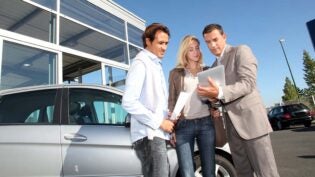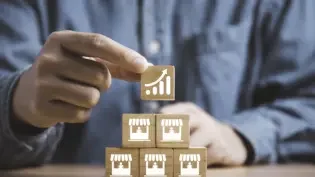Putting Your Company’s Purpose First to Help Create Positive Impact
By: Redshift

Most companies are born in a vacuum, from the space where a creator and a maker saw a need out in the world and took the many steps needed to fulfill it. But as time passes, spreadsheets and the bottom line can obscure the original intention, and that same company can lose sight of its reason for existence.
In my job as Autodesk’s CMO, I’ve come to understand that companies that don’t think beyond profit are missing out on critical opportunities to acquire and retain customers and talent. A company’s purpose—its reason for doing what it does—is an opportunity to grow and foster better relationships with precisely the people needed to succeed.
Leadership expert Simon Sinek famously stated, “People don’t buy what you do; they buy why you do it.” For your business to succeed and stand out in today’s socially conscious world, the “why” needs to be tangible and be about more than just making money.
Developing and pursuing an authentic purpose will help you forge stronger connections with your customers, employees, and the world at large. We’ve recently gone through the process of evolving our purpose at Autodesk. If you aren’t already thinking about your purpose, now is a great time to start.
The Value of Purpose
Why does purpose matter? What is its value? Turning a profit or meeting shareholder expectations is no longer enough for brands. What you contribute to society—what good you’re doing in the world—is important to your customers, clients, and employees. Do you contribute to easing social inequality? Do you help with environmental and sustainability issues? How do you treat your employees and workers in your supply chain? How do you treat your customers?
Today, companies are held to a much higher standard and are more scrutinized than ever. Brands like Tom’s shoes and Patagonia exemplify this new standard of responsibility; their business practices promote fair labor and giving back, which underpins all that they accomplish. Both brands have a simple, clearly stated purpose. And both brands have garnered incredible customer loyalty, in no small part because of their purpose-driven actions.
Purpose and values have an impact on whom customers decide to buy from. We’ve seen it firsthand: Customers have told us they chose us because of alignment on values—that they believe whom they do business with reflects directly on their brand. As you align with companies that reflect your values, your impact and reach can grow beyond what you thought possible. It opens up a world of options for you.
Getting Started: Design a Framework
If you are looking to define—or redefine—your purpose, start by asking this simple question: “Why do we exist?” Then look at it from the angle of your different constituents. Interview or survey your employees, your customers, and your partners. All of these different stakeholders hold vital information; asking them what they thought your company stands for can be your way to hone that core purpose.
When you do this, it can also be useful to put some statements in front of them and see how they react. Test actual words and phrases. See what sticks and what gets lost.
As we went through this process of evolving our purpose at Autodesk, we went to some businesses we worked with and said, “Our role is to be your partner, not your vendor. How does that resonate? What does that mean?” A lot of the feedback said, “Partnership to us means you have skin in the game, and we’re in it together.” A vendor is just an agreement. You’re handing something off and moving on.
When your partners and clients share, listen to what they say. Do they interpret your ideas as intended? And do you think your purpose has the longevity to carry your company for a 10- to 15-year period? For purpose to be effective, it must be communicated consistently, be connected to what you do as a business, and above all, be credible and authentic.
Consistency: Don’t Just “Launch and Leave”
Communicating—and doing it consistently—is critical.
Once you’ve established what you believe to be your purpose, you need a strong communications plan. It’s impossible to overcommunicate this information. Make it a conversation—one where you also get a chance to listen to what comes back, how your message is received, and whether it resonates with people.
You can roll out information in phases, first to employees and then to partners and the broader world. Find different avenues to reinforce your purpose and the steps the company will take to follow through on it. This should be a cadence of continuous communications that comes out across different channels, such as online, virtual and physical meetings, and more. Do not just “launch and leave”—there needs to be follow-through.
Then have people play it back to you, just as you did in the initial phases. Ask your employees, partners, and shareholders to tell you what they think your purpose means. Is it sticking? You have to keep communicating this purpose and the plans until you know everybody has embraced and internalized it.
Connectedness: Show Proof of Impact
Stating your purpose is one thing, but demonstrating your impact is quite another. This is where you begin to walk the walk, instead of just talking the talk. Where did you actually make a change? How did your company’s activities have a tangible impact? How is your work with customers tied directly to your stated purpose?
There must be a direct connection between what you do as a business and your stated purpose. We exist to help people imagine, design, and make a better world. Our software allows people to do just that.
Our position is this: We are your partner. We actually believe that through our partnership with you, we helped you make an impact. Factory_OS—one of our partners—provides a great example of this.
Construction waste accounts for 30% of the world’s waste. When we partnered with Factory_OS, the company wanted to significantly reduce its construction waste. With the help of our technology, Factory_OS reduced waste from 30% down to below 10%; now, it’s striving to get as close to zero as possible. Factory_OS gets to make this impact and share the success story of what it did to reduce waste—and we do, too.
Credibility: Embrace the Purpose
People are smarter than ever about sniffing out whether you mean what you say or are just making statements for the sake of marketing. You have to be credible. Authenticity is critical.
As an example, we can’t just say, “We believe in reducing our carbon footprint.” Sure, you can tell everyone. You can put it in a PowerPoint. But to actually operationalize it, you must change your behavior and track how you’ve improved your footprint. That shows you’re real, and people can respond when you’ve demonstrated actual changes.
Ultimately, living your company’s purpose with intention and clarity brings new companies and talent into your orbit. Your purpose is how you actually differentiate yourself among the competition. It’s how you personalize your brand’s persona so that it’s not easily co-opted by somebody else.












